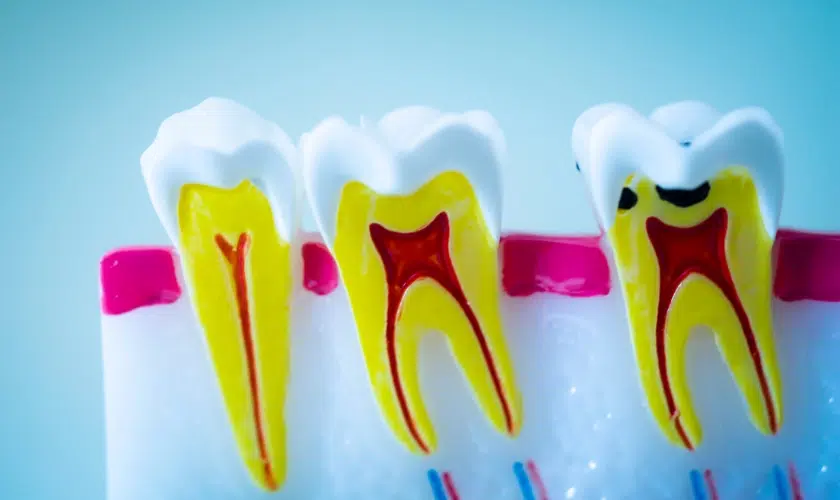

Is Your Child a Candidate for Root Canal Therapy? Signs to Look For
As a parent, nothing is more important than your child’s health and well-being. When it comes to dental care, you may be wondering if your child needs root canal therapy. While the idea of a root canal can be intimidating, it’s essential to understand that this procedure can save your child’s tooth and prevent further complications. In this post, we’ll discuss signs to look for in determining whether or not your child is a candidate for root canal therapy. So let’s get started!
What is Root Canal Therapy?
Root canal therapy is a treatment used to save a tooth that is severely decayed or infected. The procedure involves removing the damaged or infected tissue from inside the tooth, cleaning and disinfecting the tooth, and then filling and sealing the tooth. Root canal therapy can be performed on children’s teeth, but it is more commonly done on adult teeth.

Is My Child a Good Candidate for RCT?
There are a few things that will help you determine if your child is a good candidate for root canal therapy. First, if they have severe tooth pain that isn’t relieved by over-the-counter pain medication, they may need a root canal. Second, if they have a tooth that is discolored or has been injured, a root canal may be necessary to save the tooth. Finally, if your child has an abscess (a pus-filled pocket) on their gums near the affected tooth, this is another sign that a root canal may be needed. If you’re not sure whether or not your child needs a root canal, talk to their dentist. They will be able to examine your child’s teeth and give you a professional opinion.
Signs to Look For
If your child complains of tooth pain that doesn’t go away after a couple of days, it’s time to take a closer look. Other signs that your child may need root canal therapy include:
-Tooth pain that gets worse when chewing or biting down
-A tooth that is sensitive to hot or cold temperatures
-A small bump or pimple on the gums near the affected tooth
-Discoloration of the affected tooth
If you notice any of these signs, don’t hesitate to contact your child’s dentist. They will be able to determine if root canal therapy is necessary.
Benefits of RCT for Children
There are many benefits of RCT for children. One of the most important is that it can help save a tooth that would otherwise be lost. RCT can also help prevent further damage to the tooth and surrounding tissues and can help relieve pain and sensitivity. In addition, RCT can help improve the appearance of a child’s smile.
Types of Root Canals for Kids
There are a few different types of root canals that your child might need, depending on the severity of their tooth decay. If the decay is caught early enough, a simple filling might be all that’s needed. But if the decay has reached the pulp of the tooth, a more invasive root canal procedure will be necessary.
The most common type of root canal for kids is called a pulpotomy. This procedure involves removing the infected pulp from the tooth while leaving the healthy pulp intact. A pulpotomy is usually performed on baby teeth or primary teeth that haven’t fully developed yet.
Another type of root canal that your child might need is called an apicoectomy. This procedure is similar to a pulpotomy, but it involves removing the entire tooth root instead of just the pulp. An apicoectomy is typically reserved for permanent teeth that have been severely damaged by decay or trauma.
Preparation and Aftercare
Assuming your child is experiencing one or more of the symptoms discussed in the previous section, you will want to take them to see a kids dentist as soon as possible for an evaluation.
During the initial examination, the dentist will carefully examine your child’s teeth and gums. They may also take x-rays to get a closer look at the tooth/teeth in question. Based on this information, they will be able to determine if root canal therapy is necessary.
If it is determined that your child does need root canal therapy, don’t worry! The procedure is relatively quick and easy. First, your child will be given local anesthesia to numb the area around the affected tooth. Once they are sufficiently numb, the dentist will access the pulp chamber of the tooth and remove any infected or damaged tissue. The next step is to clean and disinfect the inside of the tooth before sealing it up with a special filling material.
Aftercare for root canal therapy is pretty simple. Your child may experience some soreness and sensitivity in the treated tooth for a few days after the procedure, but this can be easily managed with over-the-counter pain medication. Just be sure to have them avoid chewing directly on the treated tooth until it has fully healed. Other than that, there are no restrictions on diet or activity following root canal therapy!
Alternatives to RCT
There are a few alternatives to root canal therapy that your child’s dentist may recommend. One is what’s called a vital pulpotomy. This is a procedure in which the dentist removes the diseased or damaged pulp from the tooth, but leaves the healthy pulp intact. The tooth is then sealed with a material called a sedative filling.
Another alternative is vital pulpectomy, which is similar to vital pulpotomy but involves removing all of the pulp from the tooth, both diseased and healthy tissue. The tooth is then filled with an inert material and sealed.
A third alternative is an extraction, which is when the tooth is removed entirely. This may be recommended if the damage to the tooth is too extensive for root canal therapy or other alternatives to be effective.
Conclusion
When it comes to root canal therapy for children, there are certain signs that parents should look out for. If your child is experiencing any of the symptoms discussed in this article, it may be time to take them in for a consultation with their dentist right away. While some of these symptoms can be caused by minor issues, they could also indicate a need for more serious treatment and intervention. Ultimately, the best thing you can do is speak to your child’s dentist as soon as possible so that they can evaluate whether or not root canal therapy is necessary.
If your child is experiencing any of the following symptoms, it’s time to bring them in for a consultation:
-Toothache
-Sensitivity to hot or cold temperatures
-Swelling or tenderness around the tooth
-Darkening of the tooth
After a thorough examination and review of your child’s medical history, our team will be able to determine if they are a candidate for root canal therapy.







